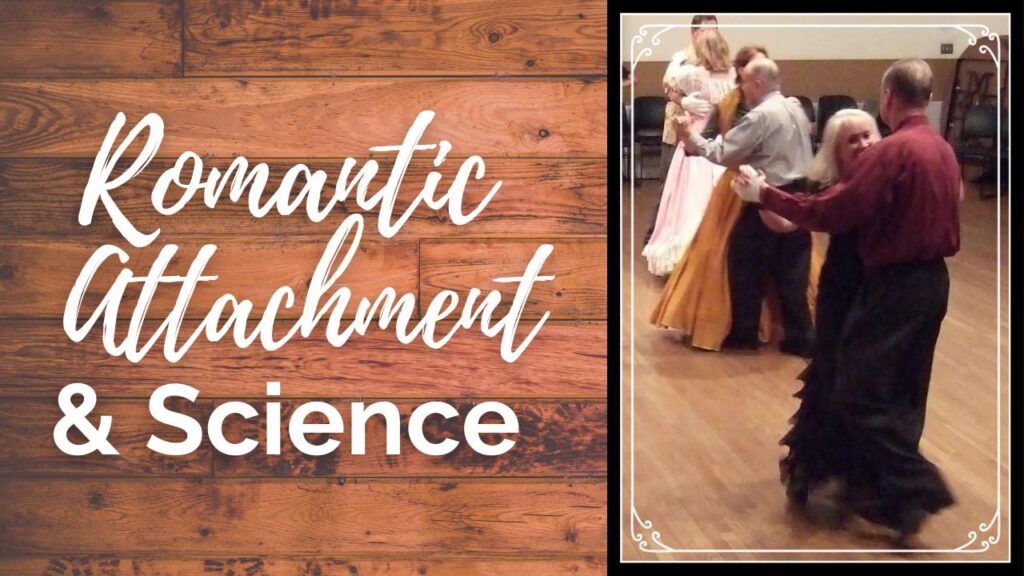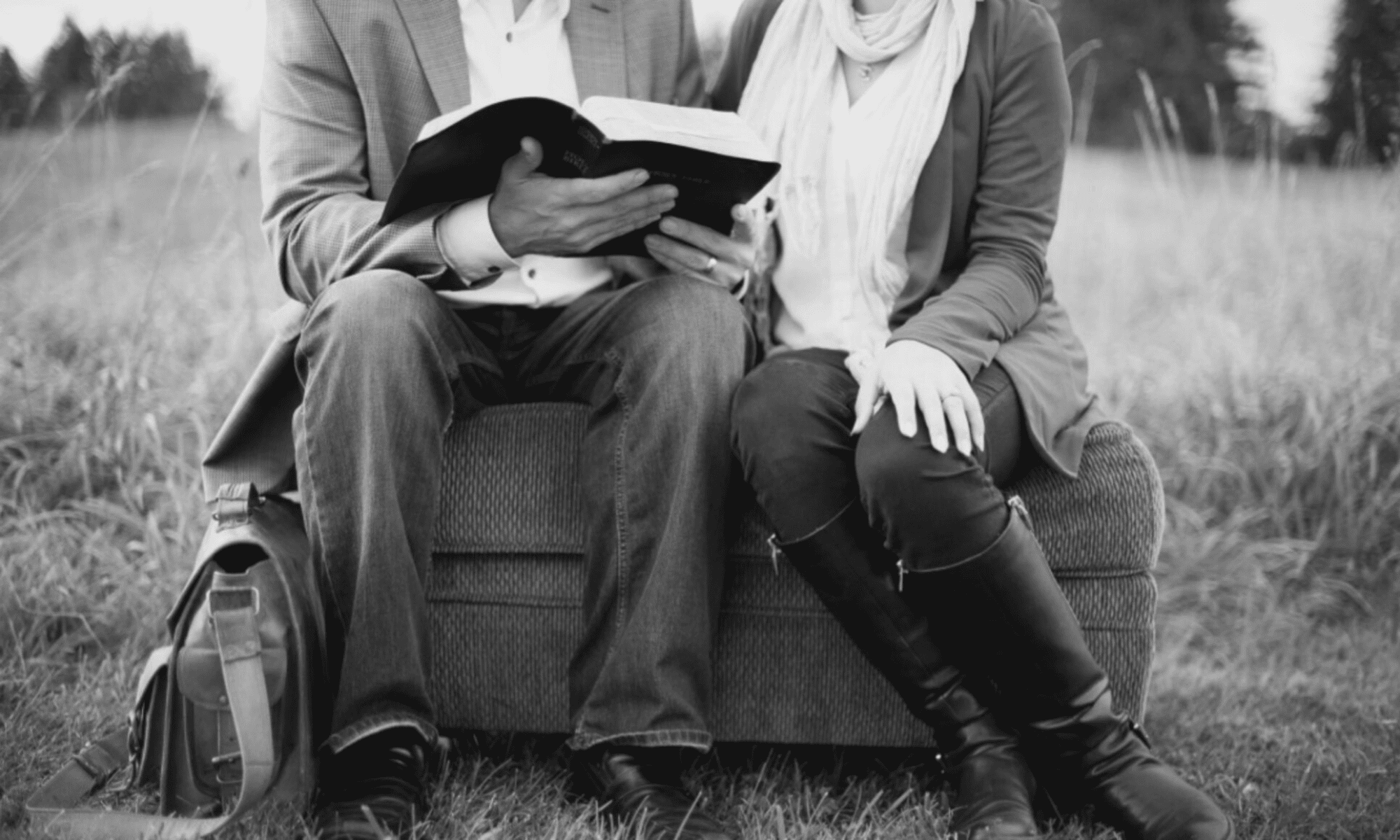
For this reason a man will leave his father and mother and be united to his wife, and the two will become one flesh. ~ Ephesians 5:31a
Parents are important. Without them we wouldn’t even be here. And without them, we wouldn’t know how to be in relationship with one another. Therein lies the source of some of the problems we encounter in Romance.
Dad and Mom taught us more than we realize.
Some of it wasn’t so good … as if we were not sinful enough on our own to cause relationship troubles. I know, right?
But do not despair!
What was learned can be unlearned. None of that stuff is written in stone.
The Scientific Theory of Emotional Attachment
Dr. John Bowlby, a British psychiatrist, was among the early researchers in Attachment Theory, and he explored the impact of the mother-child relationship. He noticed that, in addition to their need to be fed and protected, children also have a need for very strong emotional bonds with their parents or caregivers.
He proposed that we come into this world with an attachment system that assures our survival and safety in relationship to significant caregivers. So whenever a baby is distressed, this attachment system motivates him orher to seek closeness to a safe person.
When someone has been consistently available and responsive to the baby’s needs, negative emotions (e.g., anger, fear, sadness, hurt) naturally decrease. The child is soothed and begins to develop the capacity to self-soothe by simply recalling the feelings associated with being comforted by a loving caregiver.
Based on these memories, a child develops a “template” for relationships that includes the beliefs that are essential for secure emotional attachment:
(a) I am lovable, and
(b) I can depend on others to be loving toward me and to help meet my needs.
Secure Emotional Attachment
Subsequently, other researchers have tested these ideas and found that interactions between a child’s temperament and the caregivers’ responsiveness will result in more or less secure styles of attachment.
As stated previously, our early experiences provide us with both images and emotions that form the template that serves as a pattern for understanding how to form relationships and how dependable we can expect them to be.
We learn about ourselves in relation to others based on
(a) their availability and responsiveness to us, and
(b) how effective we are in getting others to respond to our needs.
Although later experience may change our beliefs about the security of our relationships, we most often seek out people who fit the template we already have. Generally speaking then, if we developed an insecure style of attachment during childhood, it will probably continue to haunt us throughout adulthood … unless a later relationship (e.g., with a human being or even with God) is established that provides a series of new experiences that help us become emotionally secure.
Research continues in the field of Adult Attachment Theory, with new information and more intricately defined models being formulated in recent years. As noted, I prefer to use a particular model in my explanation of attachment because of its simplicity and elegance in explaining the way a couple creates a beautiful Romance, as well as in describing the various ways that things can sometimes go painfully wrong.
Your Attachment Style
Because you are created in the image of God, you came into this world with a need for relationship. Your deepest desire has always been for an intimate relationship with Him … as well as with another Someone … who wears skin.
Your current attachment style is simply the result of your life experiences to date. So if another human being has been available and responsive to your needs on a consistent basis, you’re probably in pretty good shape for Romance.
However, many of us – myself included – have experienced significant hurt and pain in close relationships … especially with the opposite sex. If that’s you, you may be having a hard time creating and/or maintaining a healthy Romance. But that can all change … for the better!
So if you are feeling insecure, just think of it as true for you just for now. Because the Truth is that you were designed with an innate desire and capacity to form secure emotional attachments. How cool is that? Pretty darn.
Self-Assessment
You can assess your own emotional attachment security in a variety of ways, but one of the easiest is to take a look at what happens when you feel stressed out. How you handle stress (and express yourself) involves both your feelings and your actions.
We all get a bit anxious when we’re under stress … some more so than others, of course. Whenever you experience anxiety (worry, concern, fear, frustration, feeling trapped or stuck), then your ability to communicate is also affected.
You’ve also learned what actions to take when you’re stressed. Are you someone who seeks out other people to help you with your stress? Or do you pull away from others and try to handle your stress on your own?
Security and Anxiety
Securely attached men and women still experience anxiety, but at lower levels. When they’re worried or concerned about something – inside or outside of the relationship – they seek out their partners to help them talk things through. After their talk, they feel less worried. If that sounds like you, you are probably more emotionally secure.
- A securely attached man feels confident taking the lead in the Dance of Romance. That’s not to say that he never has doubts or anxieties. However, when he does, he talks to his partner about it. He’s learned that it’s okay to be vulnerable with her – that she is a safe person for him. He knows that she will be available and responsive to his needs.
She never shames him or makes him feel bad about himself, but instead knows how to comfort him without making him feel like a little boy in the process. This can get a little tricky for women who don’t really understand the differences between men and women in this regard.
- A securely attached woman feels safe following her partner in the Dance. She trusts him and is confident that he has her best interest in mind … that he won’t drag her around like she’s a rag doll … or leave her standing there all alone.
She also trusts that he is paying very close attention to God’s guidance, as well as close attention to her needs and desires. She knows he’s open to her input and her feedback. It’s not that he always does whatever she says; it’s just that he is always willing to listen to her ideas.
She respects his developing leadership abilities, asks him for what she needs when she feels anxious, and can rest secure in his arms as he choreographs their Dance of Romance.
Insecure Emotional Attachment
As I mentioned, not all of us arrived at adulthood with a secure attachment style. The style you currently have could be Preoccupied, Fearful Avoidant, or Dismissing. Each has its own distinctive set of problems in Romance.
Focused (Preocccupied) Attachment is characterized by a negative view of yourself (I’m not okay) and a positive view of the other person (you are okay). If that’s you, you feel highly anxious in relationships, show a high level of dependence on others, and may invest significant energy in relationships that may not necessarily be in your best interest to maintain.
Someone with a Focused Attachment style has difficulty loving, trusting, and respecting a partner in Romance, and might appear to be controlling or dominating. If that’s you, then the greater your anxiety becomes, the more likely that you will appear to be angry, demanding, and/or critical.
Fearful (Avoidant) Attachment is characterized by negative views of both yourself and the other person (neither of us is okay). If that’s you, you probably avoid getting too close to others because you’re fearful of your own vulnerability.
You anticipate that others will be hurtful and may actually believe that you don’t deserve to be treated well due to your perceived shortcomings. Although you may secretly desire Romance, you aren’t likely to take that risk because you’re afraid of looking bad, feeling rejected, or being criticized.
Although Closed (Dismissing) Attachment is also characterized by social/relational avoidance, the interpersonal dynamics are quite different from those of Fearful Avoidant Attachment. If you have a Closed Attachment style, you probably have a more-or-less positive view of yourself (I am okay) and a negative view of others (You’re not okay).
You see little, if any, value in intimacy and are consequently counter-dependent in your relationships. That is, you will often choose independence and autonomy over relational interdependence. In other words, you don’t care much for Romance. At best, you think it’s too much bother … and at worst, it’s just plain silly.
And there you have it. Many of us can identify a multitude of ways to make sure our relationships don’t work. However, we’re going to invest our energy on what actually does work. What works is very simple: being available and responsive to our partners “in the here-and-now,” and caring about how our actions might affect others – especially the person we love most in this world.
So what does that look like? A lesson on the dance floor
For the most part, I think I’m getting pretty good at being available and responsive to my partner. Although I’ve become an “expert” on the psychology of men and relationships, the Lord teaches me more about both topics every day.
Once during a dance lesson, Fred and I were demonstrating the “swing” step, and he was telling the men how to make it enjoyable for the woman.
He said, “Guys, you just pay attention to how your sweetie’s body is responding to the music and to you, and then you match her.”
Huh? For years I’d been telling women that they need to follow their guy – to match him. So I was more than a little taken aback by his verbal instructions.
I looked up at him and spontaneously proclaimed, “You’re matching me? I thought I was matching you!”
He just smiled and replied, “We’re matching each other.”
Now I ask you, “How sweet is that?” A perfect way to play out Ephesians 5:21 – right in the middle of a dance lesson!
As couples, we must learn to pay attention to one another’s needs and to be responsive to one another in light of the unique design and purpose given to us by Our Creator. Remember it was Christ who announced the revolutionary idea that husbands and wives are equal before Heaven, at the same time recognizing specific roles for each.
So if we want to build a Healthy Romance together, we need a more complete understanding of our respective biological differences, as well as differences in how we were nurtured.
Learn more in Ephesians 5 Romance: The Truth About Love by Dr. Debi Smith
Fred, Dr. Debi, and the Dance With Me Team demonstrate Victorian-style dance at Mariners Church in Irvine, CA. Vintage dance is stylish, elegant, easy to learn, fun … and very, very romantic.
A man & woman dancing together in three-quarter time is the best metaphor for – and experience of – Romance.
- He takes the lead. She follows.
- He guides & protects her.
- She inspires & influences him, even as she admires him and
- makes him look good to anyone who’s watching.
Submit to one another out of reverence for Christ. ~ Ephesians 5:21
This passage applies to the body of believers in fellowship with one another, so it naturally applies to husbands and wives as well. However, just how husbands and wives are to submit to one another is easily misunderstood in our current culture.
That’s what we are all about — teaching what submission looks like in the 21st Century. Couples attend to one another’s needs and are responsive to one another in light of his/her unique design and purpose.
Music by Spare Parts, used by permission, CD “Returning Heroes,” song “La Cachucha, available for purchase @ http://www.bfv.com/spareparts/


